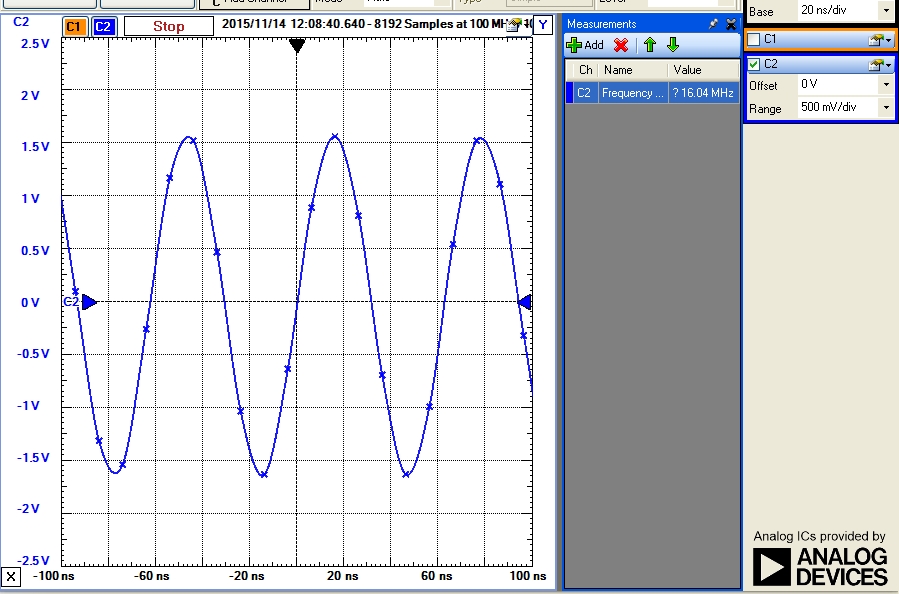
16 MHz Wien-Bridge Oscillator
Nov 14, 2015
Although high-accuracy Wien-bridge oscillators are typically used for frequencies less than about 1MHz, with modern high-speed op-amps, it is possible to easily configure a
classic Wien-bridge oscillator at frequencies in excess of 10MHz. The limit depends on the GBW of the op-amp and the phase
characteristics of the op-amp open-loop gain profile. Since variable-frequency function generators with frequency range higher than 10MHz tend to be fairly expensive,
in the absence of a generator, it is sometimes useful to be able to quickly configure a single frequency fairly high-quality stable sine wave oscillator at a frequency beyond 10MHz. The simple example below demonstrates a stable
16MHz Wien-bridge oscillator using an LM7171 200MHz GBW op-amp with a slew-rate of over 4000V/µs and is stable at a gain above 2 . As a very rough benchmark,
the GBW product of an op-amp in this circuit should be at least 10x higher
than the actual oscillation frequency of the Wien-bridge circuit and should be stable for gains down to about 3 (the bridge-balance gain condition for oscillation in
the Wien-bridge circuit). Since this bridge uses an RC network for the positive feedback, clearly the stray and
parasitic capacitance of the op-amp input will modify the operating frequency somewhat (as will the actual Vc/Ve operating voltage). For high frequency oscillation,
this is particularly true as the C values in the bridge must be fairly low since the corresponding R values cannot be too low considering the op-amp output loading by
the feedback network. Furthermore, the output current drive capability should be fairly high the slew-rate should be greater than ~ 500V/µs for output voltage
levels of 2V and frequencies of about 10MHz or higher. Considering this, the upper
limit of oscillation in this type of basic Wien-bridge circuit with very high speed (GHz or higher) op-amps is around 50MHz. For the op-amp used below, 16MHz is
about the limit. (performance is very good for fosc < 16MHz by simply increasing the C values appropriately. In the circuit below, the unity-gain
LM6171 (GBW=100MHz) follower provides reasonably good isolation and the entire circuit oscillates reliably with output loads down to ~ 50Ω.
For oscillation frequencies higher than about 50MHz, LC tank circuit oscillators can be used.



Oscillators
AN-263 Sine Wave Generation Techniques






